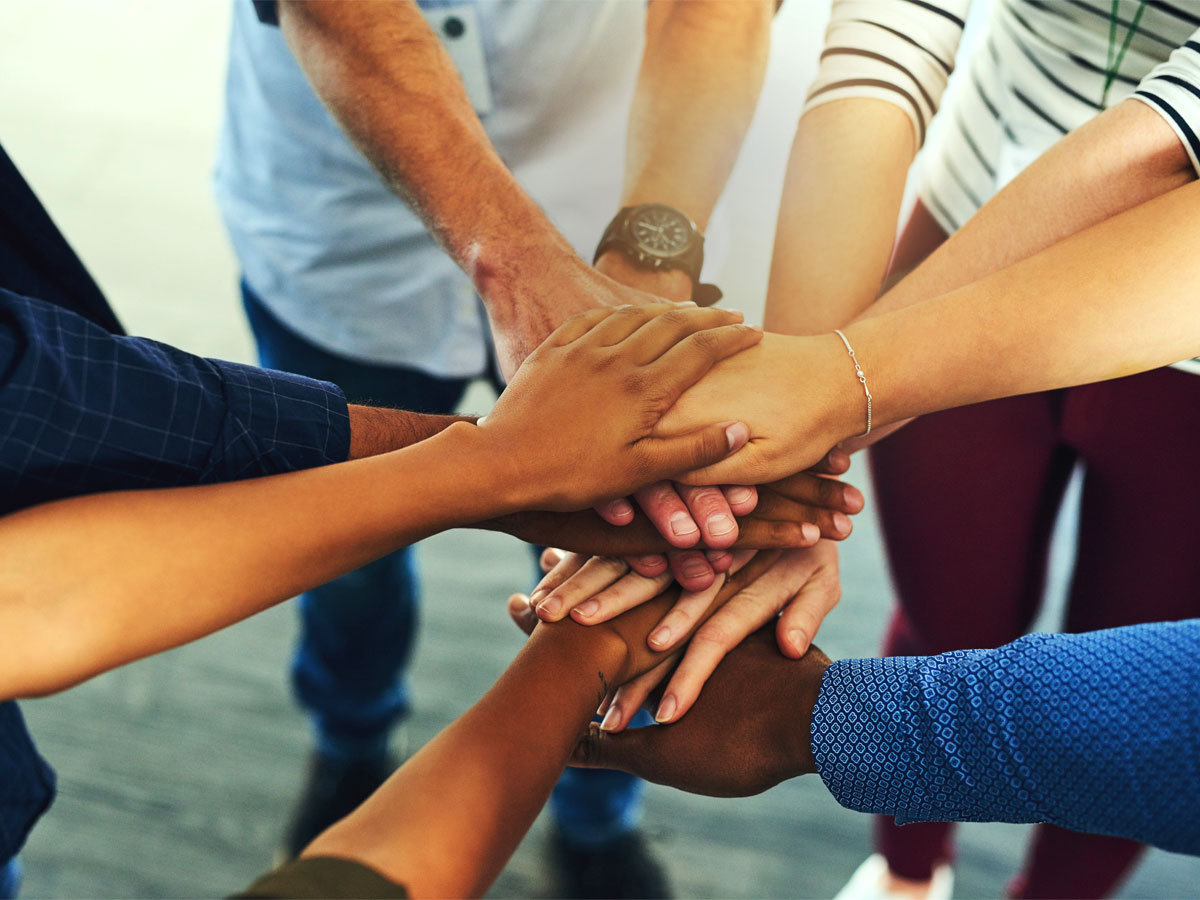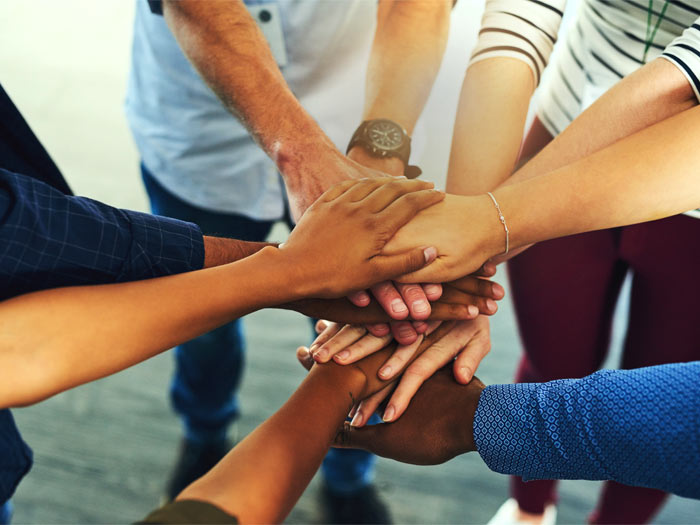
The dos and don’ts to make you an effective workplace ally
 As an ally in the workplace, you must educate yourself on the experience of the individual you’re advocating for and be prepared to confront your own biases (Getty Images/People Images)
As an ally in the workplace, you must educate yourself on the experience of the individual you’re advocating for and be prepared to confront your own biases (Getty Images/People Images)
The recent Black Lives Matter protests, sparked by the death of George Floyd, have amplified how underrepresented groups, in particular Black people, are treated in the workplace.
Corporations are scrutinizing their diversity and inclusion policies to determine whether they are uplifting underinvested groups—such as Black, Indigenous, People of Colour, women and LGBTQ2S+ employees—or perpetuating systemic barriers and preserving an inequitable status quo.
Numbers reflect the issue. According to Deloitte’s 2019 state of inclusion survey, nearly two-thirds of respondents reported experiencing, or witnessing, bias at work. Those who did experience or witness bias also reported it negatively impacting their productivity, happiness, confidence and well-being as well as workplace engagement.
That same survey emphasizes the role allyship can play in building an inclusive workforce, generating awareness, elevating voices and evoking actions that shift practices and evolve policies.
But what does it mean to be an ally?
“To quote diversity and inclusion consultant Simma Lieberman, an ally is someone who is willing to take action in support of another person to remove external barriers that impede that person from contributing their skills and talents in the workplace or community,” explains CPA Jenny Okonkwo, founder of Black Female Accountants Network (BFAN).
With that in mind, here are five tips for getting allyship right in a workforce.
1) SWEAT THE SMALL STUFF
A comment or action that may seem insignificant to you can have a lasting impact on someone else.
“Just because you haven’t experienced it yourself doesn’t mean it isn’t degrading, demeaning, offensive to someone who is different than you,” says Karen Catlin, author of Better Allies: Everyday Actions to Create Inclusive, Engaging Workplaces. “It is like death by a thousand papercuts. We need to realize that these things are impacting our co-workers and we can do better.”
According to the Deloitte survey, out of those who reported experiencing or witnessing bias in the workplace, 84 per cent of them said it was indirect or subtle in nature.
Microaggression takes on many forms, be it verbal, behavioural or environmental, and perpetuates harmful prejudices and stereotypes, including assuming someone is less senior than you, addressing them differently than other teammates and interrupting or dismissing their ideas. The privileged group often fails to detect or outright ignores these instances, even though those who are underrepresented experience them repeatedly.
As an ally, you must recognize and react when these instances occur. There are several ways to do so, according to the Deloitte survey. These include addressing it in a number of ways: in the moment to stop the situation in its tracks; at a later time with the person who was biased to bring about awareness of their offensiveness; with the individual who experienced it to show your support; or by confiding in another colleague or supervisor to bring about change. [See Fostering an inclusive workforce requires all hands on deck]
“It’s getting down to the granular and acknowledging things that are very small,” says Dynasti Hunt, diversity, equity and inclusion coach, and managing director of talent and equity at Third Sector, a San Francisco-based non-profit organization that works to systemically improve the delivery of social services focusing on educational opportunity, housing stability, economic mobility and physical and mental health.
“It’s the privilege of being in a space where you can speak up and you don’t have this instinctive fear that you will be fired, silenced or judged, or that you will be seen as angry or disruptive if you speak up,” Hunt says.
Catlin adds that using specific language such as “I’d like to hear [name] finish his thought” or “I’m sure you’ll remember [name] pointing that out earlier in the meeting” gives a voice back to the individual who was subject to the microaggression or bias.
“It’s important to have phrases in our back pocket,” she says. “You can take action so it’s not up to the people who are being interrupted and having their ideas stolen [to do so].”
2) CONFRONT YOUR DISCOMFORT
Accept that difficult and uncomfortable conversations must be had and embrace them.
You and your colleagues may have to confront and acknowledge personal behaviours, team dynamics, workplace practices and policies that are discriminatory, while agreeing and committing to change.
“It’s going to get uncomfortable. It’s going to get painful. It’s going to ask you to look at things that you’ve never looked at before,” says Hunt. “You are literally looking at every piece of your behaviour in life.”
Defensiveness is a common reaction. As you navigate through your own perceptions and biases, don’t take it personally. Remember it’s not about you, your opinion or experience, but about those for whom you’re advocating.
“It’s important that we can get past that because this whole notion of allyship isn’t about performance. It’s not about doing it to make ourselves feel better,” Catlin says. “We have to get past the personal feeling of privilege and the defensiveness to focus on other people’s experiences that, frankly, are not as easy as we might have it.”
BFAN’s Okonkwo encourages allies find emotional connections between themselves and the struggle that they’re championing, when and if these feelings arise.
“It’s taking those steps to understand where you sit on that privilege scale in relation to others,” she says. “Once that piece is done, based on the set of privileges that you have, you can ask, ‘How can I behave in a way, [using] the power and privilege that I have, to enable access and opportunity for somebody else?’”
A key component of allyship is listening adds Garry Round, president, Canada operations at Ryan, a global tax services and software provider. In 2020, for the third consecutive year, the organization was named one of the Best Workplaces for Inclusion in Canada by Great Place to Work.
“To listen effectively, leadership has to be comfortable receiving feedback and avoiding the traps of defending, denying and deflecting when employees share their perspectives,” says Round. “Ryan’s culture of feedback and accountability facilitates effective listening.”
3) EDUCATE YOURSELF
If there’s ever a situation where “ask those who know” does not apply, this is it.
Allies should take the time to independently educate themselves about the marginalized experience, rather than relying on those who face it to shed light on what isn’t known or understood. Remember: every individual and group has a different experience when it comes to bias and inequality, which requires sensitivity, acknowledgement and acceptance from the ally.
“Do the research, get yourself fully clued up to what is happening, what that struggle is about, the history of it, the whole thing,” says Okonkwo. “Allies cannot expect the person who is dealing with a set of challenges to do that. The onus is not on them to educate the ally.”
In a professional environment, this can also translate into calling upon individuals to speak at webinars, panels and events and share their experiences with inequity and exclusion. Though this may raise awareness, it often leads to little change from a workplace equity standpoint, perhaps servicing the organization’s reputation alone.
“This is called emotional labour,” says Catlin. “It’s emotional because every time we are asked to speak about our personal experiences, we are reliving some of the stuff that maybe wasn’t so great. It can be draining. It can be a huge responsibility.”
Though you shouldn’t ask to be educated, you must be an engaged listener. This includes being fully aware of the microaggressions and discriminatory practices taking place around you.
“It’s so important not to just be in the room self-examining but actually actively listening,” says Hunt. “If you hear it, then you can call it out, so the burden doesn’t fall on the Black person [or marginalized individual] to name it.”
4) CONTINUOUSLY SELF-REFLECT
Systemic racism and inherent bias run deep, integrated into every layer of our society. It takes more than believing in a cause, or rewriting a policy, to dismantle it within ourselves, as individuals and the workplace culture and structure.
As an ally, Hunt emphasizes the need for continuous self-examination. It’s not an overnight revelation. You are working alongside your colleagues evoking awareness, empathy and change together, rather than as an independent entity who suddenly thinks they knows better.
“There is this idea that I’m going to self-examine for a period of time, then I’ve figured it out and I'm done … [when in reality] you’re never done,” she says. “The second you feel like you’ve figured it out, you become even more dangerous because you are no longer focusing on learning ... Now you’re going to go teach your white colleagues, versus being humble and continuing to learn alongside them.”
Part of that self-reflection is understanding your own privilege, the power it gives you in terms of opportunity and influence, and how it contributes to the existing inequity in your organization and society, adds Okonkwo.
“When you have a really good handle on that and you have been able to demonstrate that you have helped create opportunities for others, you’re able to speak from a place of confidence,” she says.
5) WALK THE TALK
If silence is complicity, then it’s an ally’s obligation to not only speak up but to act out, says Okonkwo.
“If you’re saying that you’re a true ally, you’re going to speak up and support that person,” she says. “And it needs to be in the moment because that’s when the learning takes place. Not two weeks later, when no one remembers.”
This action takes on different forms in the workplace.
An ally can act as a sponsor, endorsing or recognizing an individual for their contributions and achievements, and recommending them for opportunities, including promotions, speaking engagements and new projects. This can be done during a meeting (remote or in-person), or over email copying a person who has influence.
“The sponsor space is where you have somebody vouching for you in all your merit in a space that you do not have access to,” says Okonkwo. “It’s a superb way of doing it in terms of the recognition piece.”
The ally can also act as an amplifier for an individual’s voice, calling on them during meetings to offer their expertise or provide insight and feedback on projects completed.
“It elevates the employee's profile and creates awareness that they have the expertise with their peers and superiors,” says Okonkwo. “It gives them a bit of a spotlight, showing great results for the company, rather than it getting buried in an annual appraisal process.”
In the end, being an ally requires commitment and action that help make a workforce more equitable and inclusionary no matter how big or small the contributions may be.
“True allies take on the struggle,” says Okonkwo. “They take it as their own and they champion it, right now.”
IMPROVE WORKPLACE CULTURE
Put in the work to become a more inclusive workplace with these expert tips. Heed this advice to make your organization more welcoming for trans people. And find out how Canada’s Big Four accounting firms fare on diversity and inclusion efforts.